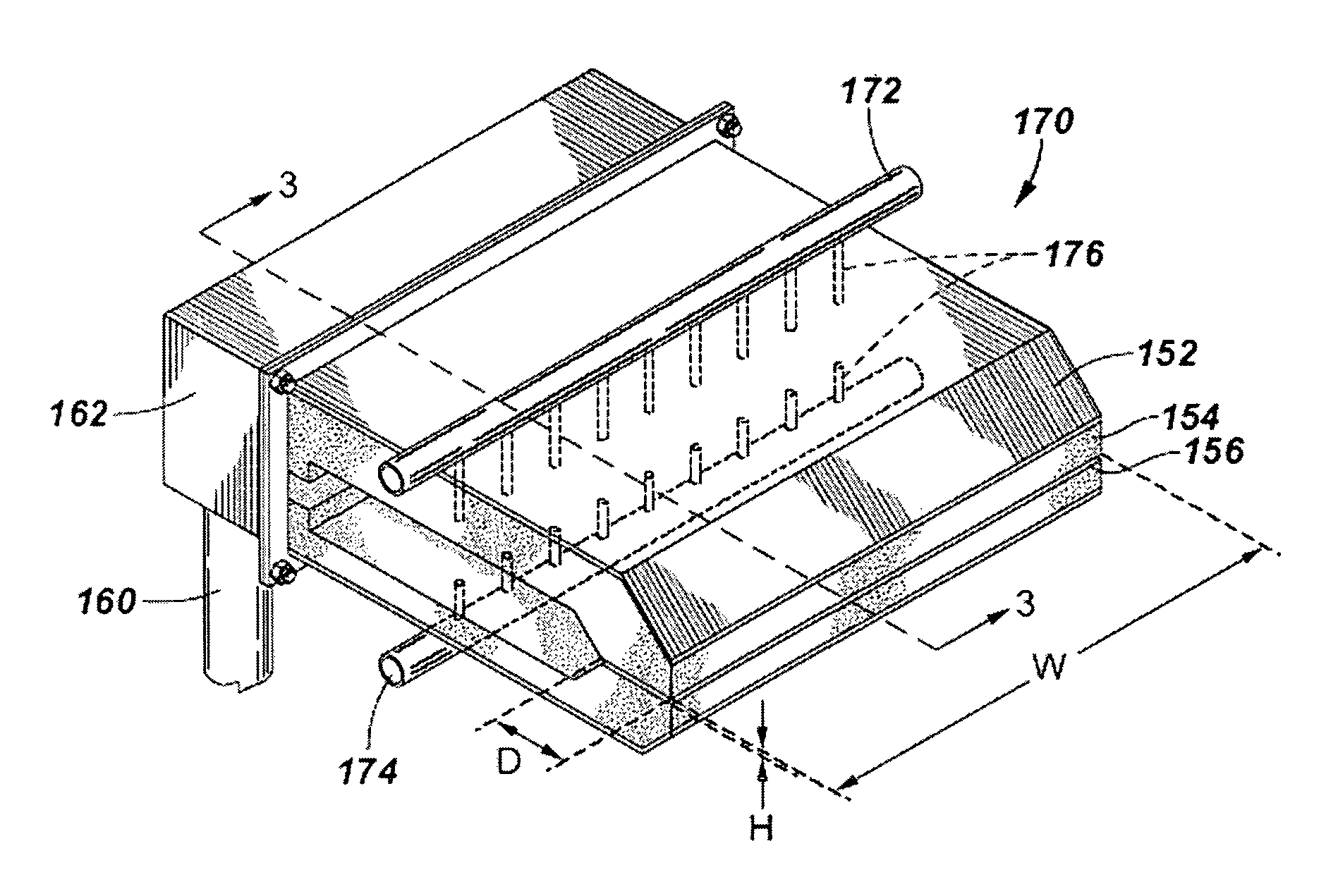Burner apparatus and methods for making inorganic fibers
a burner and inorganic fiber technology, applied in lighting and heating apparatus, combustion types, combustion using lump and pulverulent fuel, etc., can solve the problems of reducing the ability of the attenuating apparatus to reduce the fiber diameter (i.e., improving the filtration properties or insulating capabilities of the material), and affecting the quality of the inorganic fiber. , to achieve the effect of reducing energy consumption, improving quality fibers
- Summary
- Abstract
- Description
- Claims
- Application Information
AI Technical Summary
Benefits of technology
Problems solved by technology
Method used
Image
Examples
Embodiment Construction
[0065]In the following description, numerous details are set forth to provide an understanding of the present invention. However, it will be understood by those skilled in the art that the present invention may be practiced without these details and that numerous variations or modifications from the described embodiments may be possible.
[0066]The invention describes inorganic material fiberization burner apparatus and methods of using same. Although the invention is not limited to so-called “microfiber” production processes and systems, it is helpful to define the term as a starting point. As used herein, “microfibers” are defined as fibers having a mean diameter ranging from about 0.05 to about 3.5 micrometers, more typically from about 0.1 to about 1.0 micrometers. Microfibers produced by processes and systems of the invention may have a length to diameter ratio of at least about 5:1 and more usually from about 3000:1 to about 10:1. The length to diameter ratio of the microfibers ...
PUM
| Property | Measurement | Unit |
|---|---|---|
| diameter | aaaaa | aaaaa |
| combustion chamber pressure | aaaaa | aaaaa |
| mean diameter | aaaaa | aaaaa |
Abstract
Description
Claims
Application Information
 Login to View More
Login to View More - R&D
- Intellectual Property
- Life Sciences
- Materials
- Tech Scout
- Unparalleled Data Quality
- Higher Quality Content
- 60% Fewer Hallucinations
Browse by: Latest US Patents, China's latest patents, Technical Efficacy Thesaurus, Application Domain, Technology Topic, Popular Technical Reports.
© 2025 PatSnap. All rights reserved.Legal|Privacy policy|Modern Slavery Act Transparency Statement|Sitemap|About US| Contact US: help@patsnap.com



